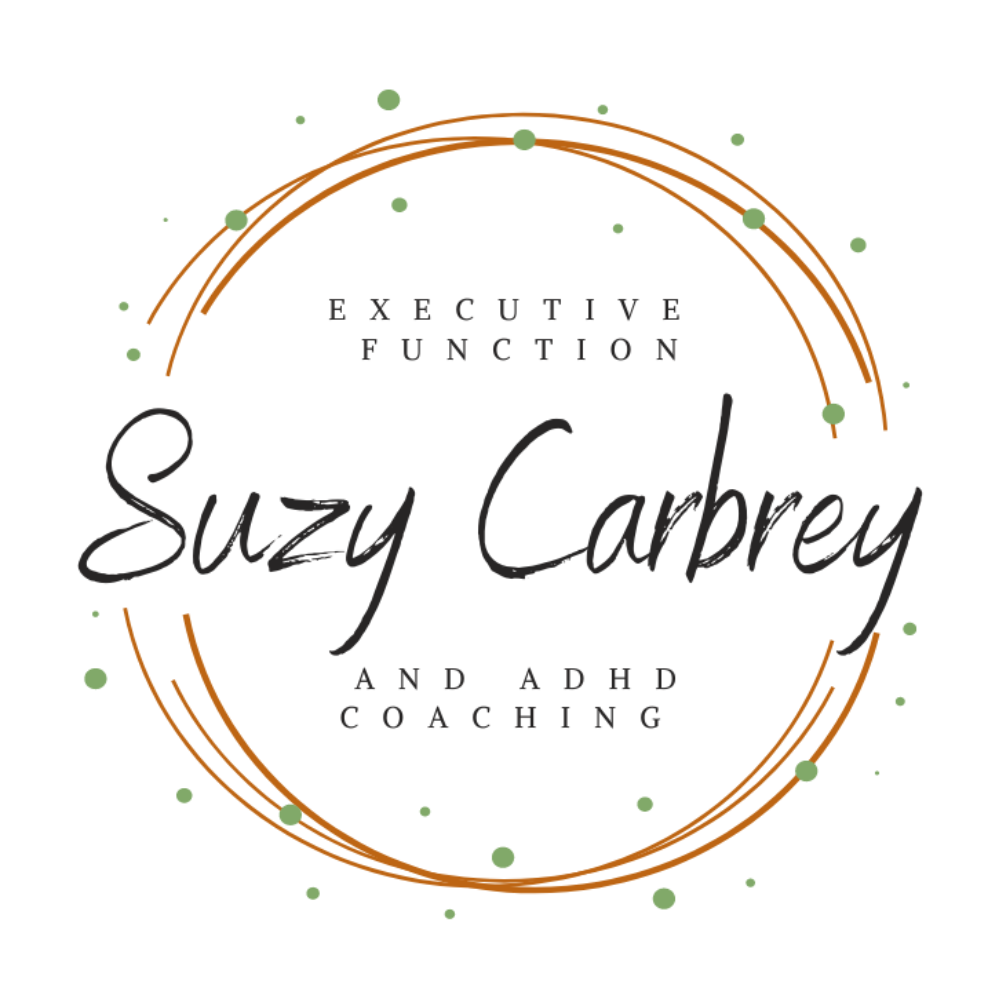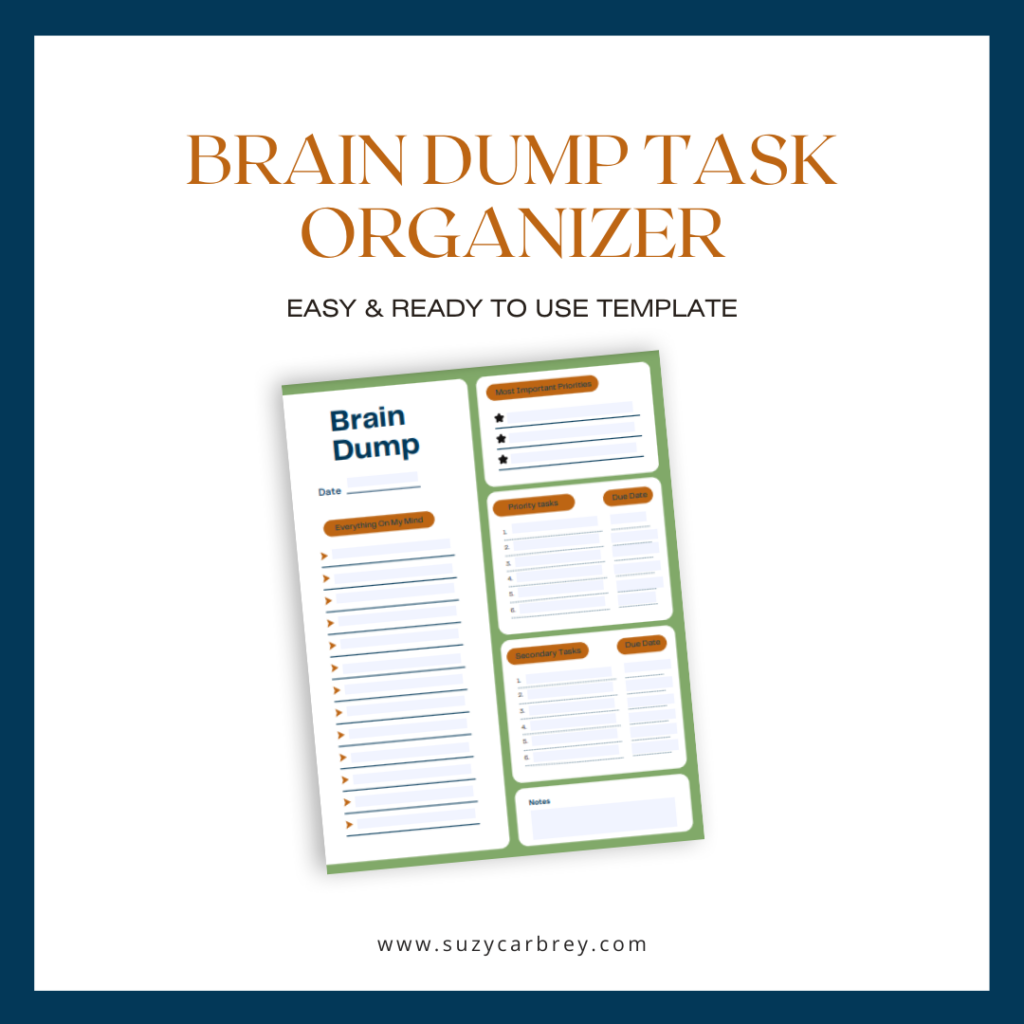Have you ever noticed that the less you want to do something, the longer you put it off… until the deadline is staring you in the face and you finally tackle it in a rush of stress and adrenaline? If that sounds familiar, you’re not alone. This pattern is often called the avoidance–urgency cycle, and it’s one of the most draining loops for people with ADHD and executive functioning challenges.
In this cycle, the more we avoid a task, the more stressful it becomes. The stress builds until urgency finally forces us into action. We get the task done, but only at the cost of exhaustion, guilt, and sometimes lower-quality work. Then, the cycle repeats.
It is possible to break out of this loop. It doesn’t happen overnight, but with the right mix of self-awareness, executive function strategies, and intentional experimentation, you can build new patterns that make tasks feel more manageable.
Let’s take a deep dive into why the avoidance–urgency cycle happens, and then explore useful and practical ways to step off the hamster wheel.
Understanding the Avoidance–Urgency Cycle
The cycle usually looks like this:
- A task comes up. Maybe it’s work-related, like a report due in a week. Or maybe it’s personal, like scheduling a doctor’s appointment.
- Avoidance kicks in. The task feels boring, overwhelming, confusing, or emotionally uncomfortable. Instead of doing it, you distract yourself with something else.
- Time passes. The task hangs over your head, creating a low-level hum of guilt or stress in the background.
- Urgency arrives. A deadline looms, or consequences become unavoidable. Suddenly adrenaline takes over, and you scramble to finish.
- Temporary relief. The task gets done, but often at the cost of sleep, calm, or quality. You promise yourself you’ll start earlier next time… but the cycle repeats.
This cycle is especially sticky for people with ADHD. Why? Because ADHD brains are wired to seek stimulation and often rely on urgency as a motivator. Deadlines, last-minute pressure, and the rush of adrenaline can temporarily kickstart focus. That’s why it sometimes feels like procrastination “works” until it doesn’t.
Why This Cycle is So Hard to Break
Breaking the avoidance–urgency cycle isn’t as simple as “just do it.” If it were, you’d already be doing it. There are real brain-based reasons this pattern shows up:
- Time blindness: Difficulty sensing how much time tasks will take or how soon deadlines are approaching.
- Emotional avoidance: Tasks can stir up feelings of inadequacy, fear of failure, or frustration. Avoiding the task avoids the discomfort temporarily.
- Low dopamine motivation: ADHD brains are less responsive to delayed rewards. Immediate stimulation often wins out over distant benefits.
- Perfectionism: When only “perfect” effort feels acceptable, starting feels too overwhelming. So avoidance takes over.
- Executive function load: Initiating, planning, and sequencing steps are hard work for the brain. Avoidance can feel easier than pushing through.
Understanding these roots is key. The avoidance–urgency cycle isn’t laziness or a lack of willpower. It’s a mismatch between how your brain works and how tasks are structured.
The goal, then, isn’t to shame yourself into “just trying harder.” It’s to build a toolkit of strategies that reduce avoidance, make tasks easier to start, and help motivation show up before the crisis point.
Step 1: Normalize the Cycle Without Shame
The first step is to stop treating procrastination as a character flaw. Self-criticism only makes procrastination worse. Shame fuels avoidance because it adds more emotional weight to the task.
Instead, try naming the cycle out loud: “I notice I’m in the avoidance–urgency loop right now.”
That small act of noticing separates you from the behavior. You are not procrastination. You are a person who sometimes gets caught in this cycle, and you’re practicing awareness so you can try something different.
Step 2: Shrink the Task Until It Feels Doable
One of the most powerful ways to disrupt avoidance is to lower the barrier to starting. Research on behavior change shows that tiny steps are more effective than huge leaps. If the task feels overwhelming, break it down until the first step feels almost laughably small.
Examples:
- Instead of “clean the kitchen,” try “put one plate in the dishwasher.”
- Instead of “write the report,” try “open the document and type the title.”
- Instead of “call the doctor,” try “find the phone number.”
By shrinking the task, you remove the weight of perfectionism and overwhelm. The brain gets a quick dopamine hit from completion, which makes it easier to keep going.
Step 3: Use External Supports for Time and Focus
Because ADHD often involves time blindness and inconsistent focus, external supports make a big difference. These tools help bridge the gap between intention and action:
- Timers: Use the Pomodoro method (25 minutes of focus, 5 minutes of rest) or even smaller chunks, like 5 or 10 minutes.
- Visual clocks: Tools like the Time Timer make time more concrete.
- Body doubling: Working alongside another person, virtually or in-person provides gentle accountability and momentum.
- Reminders and alarms: Don’t rely on memory. Externalize it with technology.
These are brain-friendly tools. They offload the executive function load so your brain can focus on the actual task.
Step 4: Create Urgency Without the Crisis
One reason the cycle is so sticky is because urgency works. The adrenaline rush of a deadline can finally kick the brain into gear. Instead of fighting this, you can create gentle urgency earlier.
Ways to do this:
- Artificial deadlines: Set your own deadline a few days before the real one. Share it with a colleague or friend for accountability.
- External accountability: Tell someone, “I’ll send you the draft by Tuesday,” even if it isn’t due until Friday.
- Gamify tasks: Use apps that reward progress or create point systems for yourself.
- Micro-challenges: Race the clock. “Can I draft the email before my tea cools down?”

This taps into the urgency-motivation system without waiting until the last minute.
Step 5: Address Emotional Avoidance Directly
Often, it’s not the task itself but the feelings attached to it that fuel avoidance. Maybe the task feels boring, scary, or vulnerable. Research on procrastination shows that emotional regulation, not time management, is often the core issue.
Try asking yourself:
- What feeling am I avoiding by not doing this task?
- How could I make the task feel safer, lighter, or more supported?
For example:
- If you fear failure, remind yourself that it’s okay to do a rough first draft.
- If the task feels boring, pair it with music or a podcast.
- If you feel unskilled, ask for help or look up a quick tutorial.
When you make space for the emotions underneath, the task itself feels less threatening.
Step 6: Redefine Success as Progress, Not Perfection
The avoidance–urgency cycle thrives on all-or-nothing thinking. Either you do the whole task perfectly, or you avoid it entirely until urgency forces your hand. Shifting the definition of success can break this rigidity.
Try reframing success as any forward motion. Did you brainstorm ideas? That counts. Did you write three sentences? That counts. Did you open the document? That also counts.
Each small step chips away at avoidance and builds momentum. Over time, these micro-wins rewire your brain to trust that starting small really does lead somewhere.
Step 7: Build In Restorative Breaks
One hidden driver of avoidance is burnout. If your brain and body are running on empty, even small tasks feel impossible. Pushing through only fuels the cycle further.
Instead, prioritize breaks that actually restore energy:
- A 10-minute walk outside
- Stretching or movement breaks
- Listening to music
- A short nap
- Deep breathing or mindfulness practice
When you give your brain regular recovery time, it’s less likely to rebel with avoidance.
Step 8: Experiment With Task Initiation Routines
Sometimes the hardest part of a task is simply starting. Creating a personal “start-up ritual” can help signal to your brain that it’s time to shift gears.

Ideas:
- Light a candle and set a timer.
- Open the laptop, put on focus music, and take three deep breaths.
- Write down the first tiny step on a sticky note and place it in front of you.
- Say out loud, “I’m going to do this for 10 minutes.”
Over time, these cues become habits that reduce the friction of starting.
Step 9: Learn to Notice and Interrupt the Loop
The avoidance–urgency cycle often runs on autopilot. The earlier you can catch yourself in the loop, the easier it is to redirect.
Try this quick reflection when you notice avoidance:
- What am I avoiding right now?
- What’s one ridiculously small step I could do in the next 5 minutes?
- What support would make this easier: timer, music,or accountability?
Even if you don’t break the cycle every time, each interruption is practice that builds awareness and skill.
Step 10: Celebrate Wins and Build Self-Trust
Every time you take action before urgency forces you to, celebrate it. Say it out loud. Write it down. Tell someone. The brain needs reinforcement to build new patterns.
Over time, these small celebrations grow into self-trust: “I can start before the panic hits. I can trust myself to move tasks forward in ways that work for my brain.”
Why Breaking the Cycle Matters
The avoidance–urgency cycle may feel “normal,” but it comes with hidden costs: chronic stress, missed opportunities, damaged confidence, and burnout. Breaking the cycle isn’t about becoming perfectly disciplined; it’s about reclaiming your time, energy, and peace of mind.
When you learn to approach tasks with gentleness, structure, and creativity, you reduce the emotional weight of avoidance. You stop living in constant crisis mode and start building steady progress toward the life you want.
Putting It All Together
Breaking the avoidance–urgency cycle is a process, not a one-time fix. Here’s a recap of the most effective strategies:
- Normalize procrastination without shame.
- Shrink tasks into tiny, doable steps.
- Use external supports for time and focus.
- Create urgency without waiting for a crisis.
- Address the emotions underneath avoidance.
- Redefine success as progress, not perfection.
- Build restorative breaks into your day.
- Develop personal initiation rituals.
- Interrupt the loop with small redirections.
- Celebrate wins to build self-trust.
Pick one or two strategies to try this week. You don’t have to overhaul your entire system. Each small shift adds up, and over time, you’ll find yourself leaning less on urgency and more on steady, brain-friendly momentum.
Final Thought
If you recognize yourself in this cycle, remember: you’re navigating a brain that works differently, in a world that often doesn’t account for that. The cycle is real, but it isn’t permanent. With the right tools and compassion for yourself, you can step off the hamster wheel of avoidance and urgency and step into a calmer, more sustainable way of moving forward.

Learn more with Online Coaching for Executive Functioning / ADHD
Ready to gain control and enhance your executive functioning? As an experienced and compassionate coach, I specialize in providing support for executive functioning and ADHD. To embark on your journey, please reach out to me at 708-264-2899 or email hello@suzycarbrey.com to schedule a FREE 20-minute discovery call consultation.
With a background as a speech-language pathologist, I have a strong foundation in executive functioning coaching. My graduate degree program in SLP placed a significant emphasis on cognition, including executive functions, and I have years of experience in medical rehabilitation, providing cognitive-communication therapy. Additionally, I have completed an ADHD Services Provider certification program, I am Solutions-Focused Brief Therapy Diamond Level 1 certified and I am trained in the Seeing My Time® executive functioning curriculum.
Experience the convenience and effectiveness of online coaching, backed by studies that demonstrate equal results to in-person services. Parents, professionals, and emerging adults love the convenience and privacy of receiving coaching from their own homes.
Whether you reside in Chicago, Milwaukee, Indianapolis, Kansas City, or anywhere else around the globe, I am here to assist you. Schedule your discovery call consultation today, and I eagerly anticipate the opportunity to work with you!
Please note that although I am a certified speech-language pathologist, all services Suzy Carbrey LLC provides are strictly coaching and do not involve clinical evaluation or treatment services. If you require a formal speech therapy evaluation and treatment, please inform me, and I can provide appropriate recommendations.



Thank you
Your blog is a testament to your dedication to your craft. Your commitment to excellence is evident in every aspect of your writing. Thank you for being such a positive influence in the online community.
Thank you!
Your blog is a testament to your passion for your subject matter. Your enthusiasm is infectious, and it’s clear that you put your heart and soul into every post. Keep up the fantastic work!